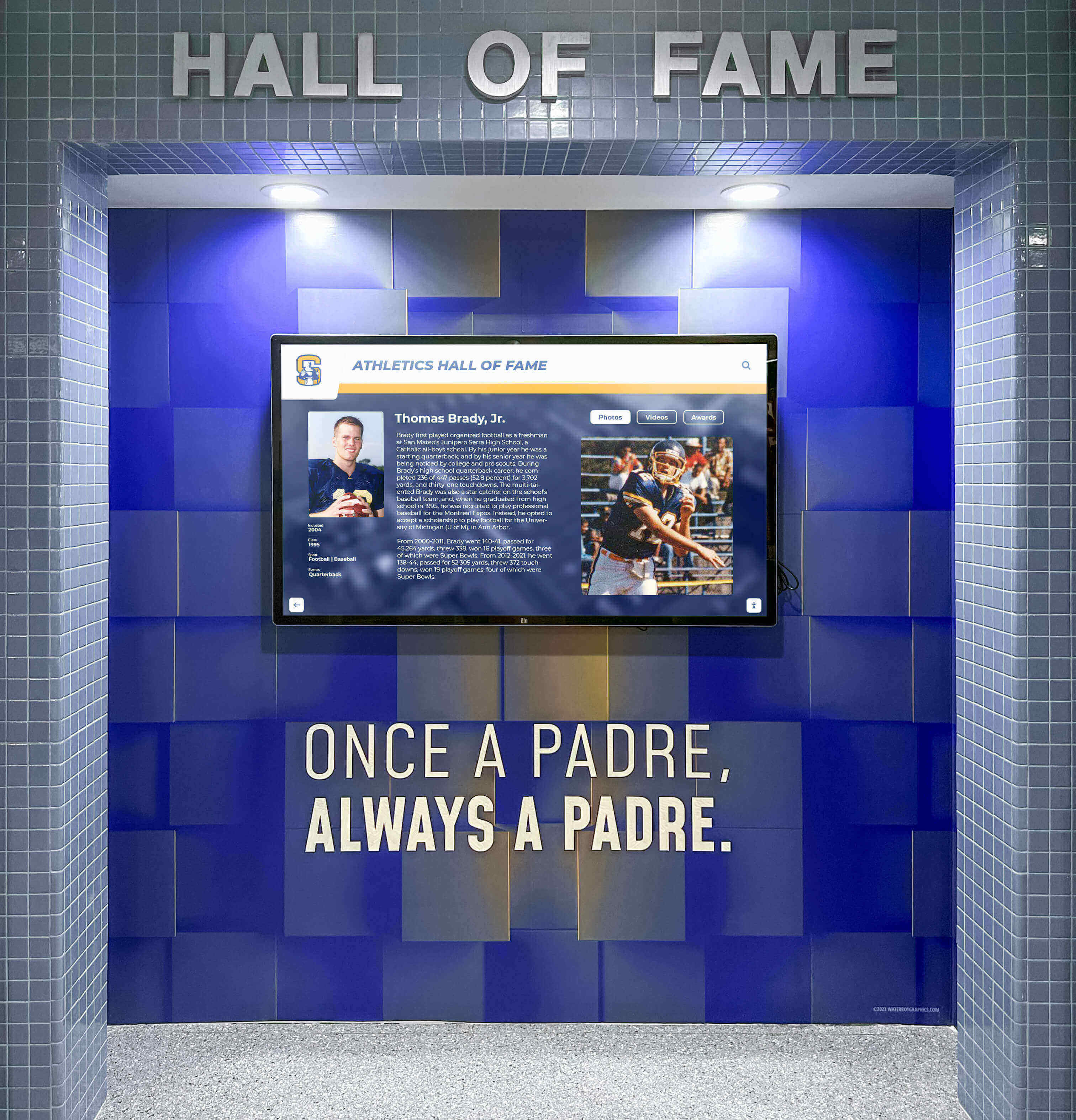Key Takeaways
Comprehensive guide to winter sports halls of fame including U.S. Ski & Snowboard Hall of Fame, Hockey Hall of Fame, and creating recognition programs for schools and organizations with modern digital displays celebrating winter athletic excellence.
Understanding Winter Sports Hall of Fame Recognition
Winter sports encompass diverse athletic disciplines unified by their shared setting—competition on snow and ice in conditions that test human limits of courage, precision, and perseverance. From alpine ski racing descending mountainsides at speeds exceeding 80 miles per hour to the balletic artistry of figure skating to the team dynamics of ice hockey, winter sports demand specialized skills, intensive training, and exceptional dedication.
The Spectrum of Winter Sports
Winter sports halls of fame recognize excellence across multiple disciplines:
Snow Sports:
- Alpine skiing (downhill, slalom, giant slalom, super-G, combined)
- Cross-country skiing (Nordic racing across varied terrain)
- Freestyle skiing (moguls, aerials, halfpipe, slopestyle)
- Ski jumping (soaring from massive ramps with precision)
- Snowboarding (halfpipe, slopestyle, parallel slalom, boardercross)
- Biathlon (combining cross-country skiing with rifle marksmanship)
Ice Sports:
- Ice hockey (team competition combining speed, skill, and physicality)
- Figure skating (individual and pairs performances blending athletics and artistry)
- Speed skating (racing on oval tracks at extraordinary velocities)
- Curling (strategic team competition requiring precision and tactics)
- Bobsled, luge, and skeleton (high-speed racing down ice tracks)
Each discipline has produced legendary athletes whose achievements deserve recognition through comprehensive hall of fame programs that preserve winter sports history while inspiring future generations.
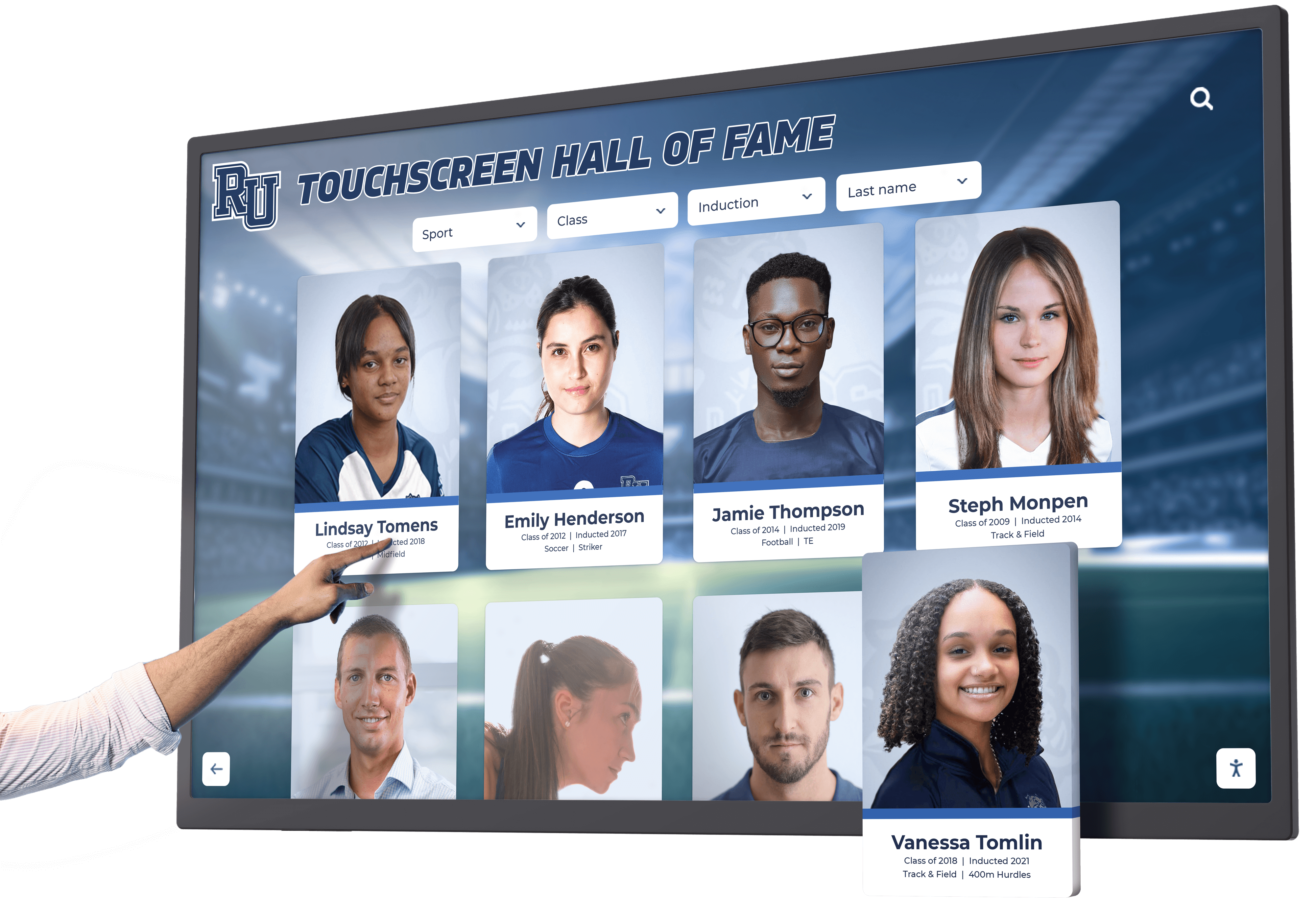
Why Winter Sports Recognition Matters
Winter sports face unique recognition challenges compared to year-round athletics:
Seasonal Visibility: Winter sports programs operate during limited seasons, often competing for attention with more prominent fall sports like football. Recognition programs ensure winter athletes receive appropriate visibility celebrating their specialized achievements and intensive dedication to sports requiring early morning practices, weekend travel, and commitment during harsh weather conditions.
Equipment and Training Demands: Winter sports typically require significant equipment investment and specialized training facilities—ski resorts, ice rinks, indoor training centers—creating barriers that make achievements particularly noteworthy. Athletes who excel despite these challenges deserve recognition honoring both achievement and commitment.
Olympic Heritage: Many winter sports gain prominence primarily through Olympic competition every four years. Hall of fame programs connect local athletes to this Olympic tradition, celebrating those who achieved elite status in sports with deep Olympic roots and inspiring young athletes to pursue winter sport excellence.
Community Pride: In regions with strong winter sports traditions—northern states, mountain communities, areas with historic winter sport participation—local winter sports halls of fame strengthen community identity and celebrate regional athletic heritage distinguishing these areas from other parts of the country.
Major National Winter Sports Halls of Fame
Several prestigious national institutions recognize winter sports excellence at the highest levels:
U.S. Ski & Snowboard Hall of Fame
Located at Ishpeming, Michigan—the birthplace of organized skiing in the United States—the U.S. Ski & Snowboard Hall of Fame honors the greatest American skiers and snowboarders who achieved distinction in Olympic, World Championship, World Cup, and professional competition.
Historical Significance:
The National Ski Hall of Fame was founded in 1954 by the National Ski Association (now U.S. Ski & Snowboard) to honor American skiing pioneers and champions. The hall expanded to include snowboarding following that sport’s explosive growth and Olympic recognition beginning in 1998.
The museum features extensive exhibits documenting American snow sports history from skiing’s introduction to North America through modern Olympic triumphs, preserving equipment evolution, training methodology development, and the stories of athletes who built American skiing and snowboarding into international competitive forces.
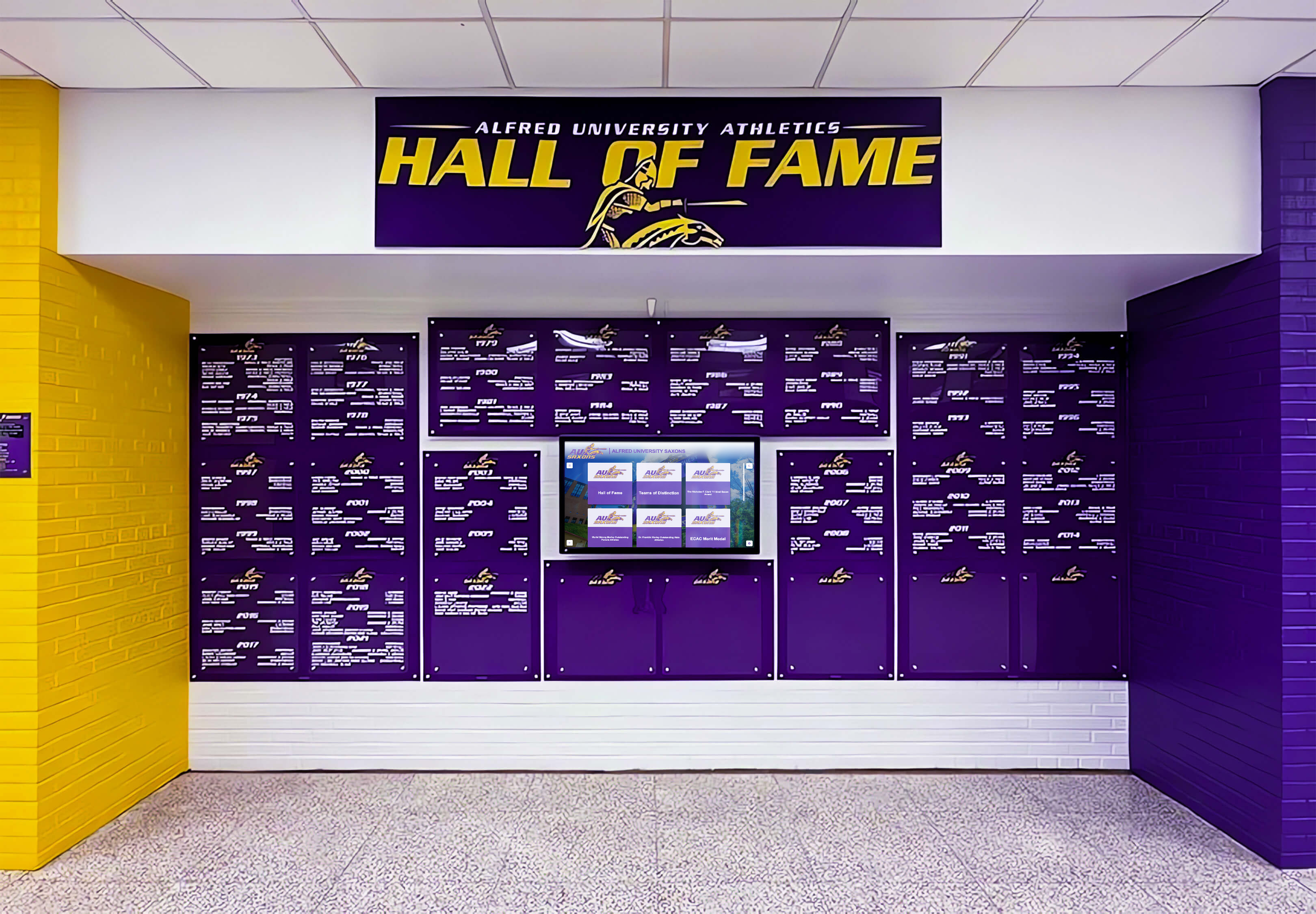
Selection Process and Criteria:
U.S. Ski & Snowboard Hall of Fame selection involves rigorous evaluation by specialized committees reviewing candidates’ competitive achievements, contributions to sport development, and lasting impact on American snow sports:
Athlete Category:
- Olympic medals, World Championship titles, and World Cup victories
- National championship achievements across multiple seasons
- Sustained excellence demonstrating long-term competitive dominance
- Pioneering achievements advancing American snow sports
- Contributions to sport development beyond personal competition
Sport Builder Category:
- Administrators, coaches, and officials who advanced snow sports organization
- Resort and facility developers who created competition and training infrastructure
- Equipment innovators whose designs improved performance and accessibility
- Advocates who promoted snow sports participation and Olympic development
- Media professionals who elevated snow sports visibility
Nominees must have been retired from active competition for at least four years, ensuring sufficient perspective on career achievements and lasting influence. This waiting period prevents recency bias while allowing careers to be evaluated comprehensively.
Class of 2025 Inductees:
The U.S. Ski & Snowboard Hall of Fame announced eight new inductees for 2025, representing diverse snow sports disciplines and contributions:
Todd Richards: Pioneering snowboarder who transformed halfpipe competition with multiple US Open victories, X Games gold medals, and world slopestyle championships, demonstrating technical innovation that advanced competitive snowboarding while inspiring a generation of riders.
Lindsey Van: Champion ski jumper who won the first-ever women’s ski jumping World Championship in 2009 and led advocacy efforts resulting in women’s ski jumping Olympic debut in 2014, breaking gender barriers while achieving competitive excellence.
Kikkan Randall: Cross-country skiing legend who captured Olympic gold in the team sprint at the 2018 PyeongChang Olympics alongside Jessie Diggins—Team USA’s first Olympic gold medal in cross-country skiing history—while accumulating numerous World Cup victories throughout her distinguished career.
Nancy Gustafson: Paralympic alpine skiing champion who earned seven gold and three silver medals across the 1988, 1992, and 1994 Paralympic Winter Games, including a sweep of all four gold medals available at Lillehammer in 1994, demonstrating sustained excellence in adaptive sports.
Douglas Pringle: Adaptive skiing pioneer who launched 42 adaptive learn-to-ski programs nationwide, provided leadership for Disabled Sports USA, contributed significantly to Paralympic evolution, and authored the first curriculum for teaching blind skiers, transforming accessibility and inclusion in snow sports.
Raelene Davis: Marketing visionary who served as Ski Utah’s marketing director for 40 years, introducing elementary school Learn to Ski/Ride programs and ethnic diversity initiatives through the Discover Winter program, significantly expanding snow sports participation across demographics previously underserved.
Jim Harley: Business leader whose 36-year career at Rossignol and Nordica helped Rossignol achieve 30% U.S. market share while overseeing construction of three North American manufacturing facilities, making quality ski equipment more accessible to American participants.
Chris Cushing: Mountain planning pioneer who designed over 200 ski area projects across five continents, including renowned American resorts like Deer Valley and Steamboat Springs, creating world-class facilities that advanced competitive skiing while enhancing recreational accessibility.
The 2025 class demonstrates the breadth of winter sports recognition—competitive athletes across multiple disciplines, adaptive sports pioneers, inclusion advocates, business innovators, and infrastructure developers who collectively advanced American snow sports.
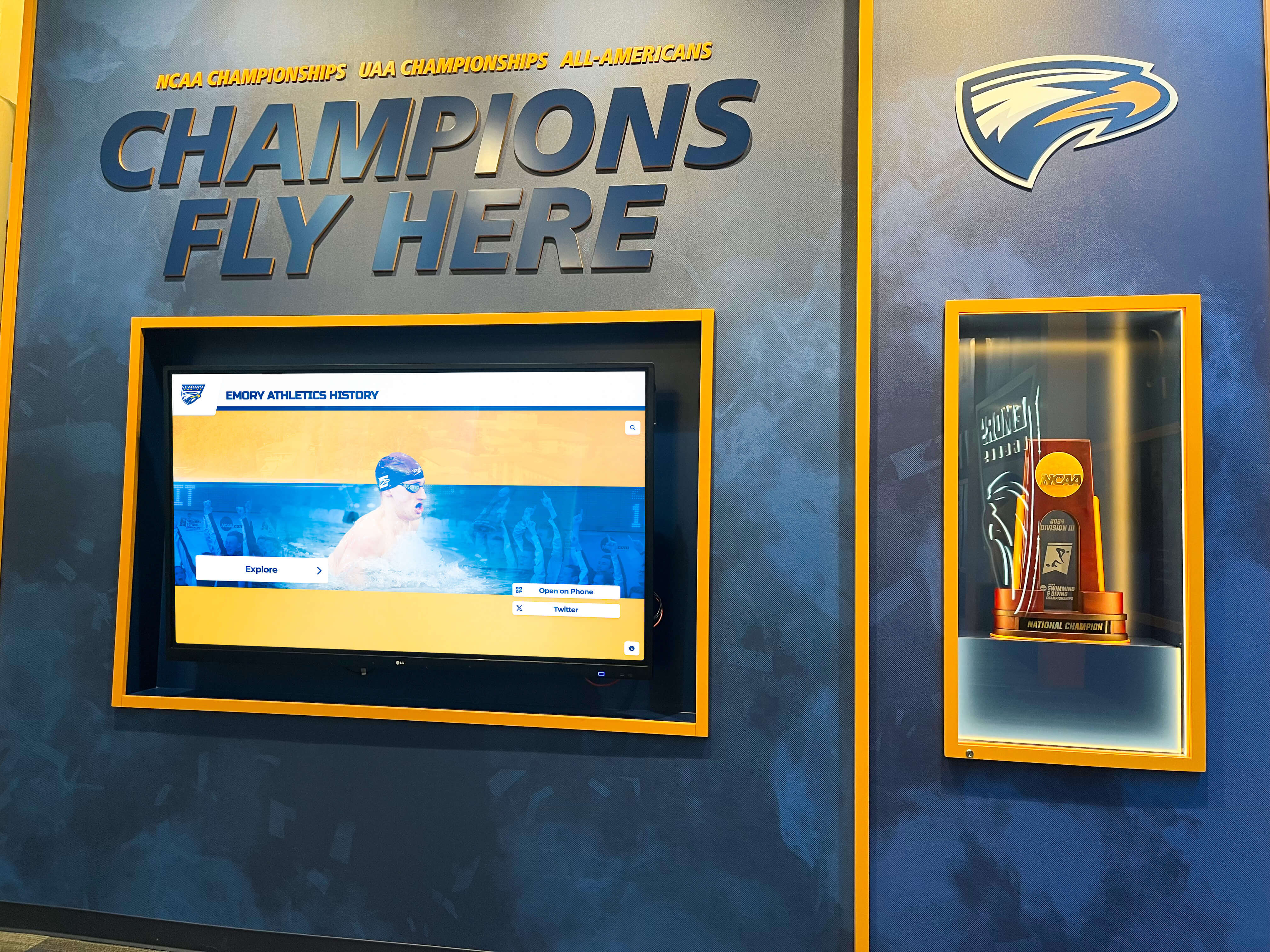
Hockey Hall of Fame
The Hockey Hall of Fame in Toronto, Ontario stands as hockey’s most prestigious recognition institution, honoring players, builders, and officials who achieved distinction primarily in the National Hockey League while also recognizing exceptional international and women’s hockey contributors.
Historical Foundation:
Established in 1943, the Hockey Hall of Fame initially existed without a physical building before opening its first facility in 1961. The current location at Brookfield Place in downtown Toronto opened in 1993, featuring comprehensive hockey exhibits, interactive displays, and the actual Stanley Cup (during off-season periods when not being celebrated by championship teams).
The Hockey Hall of Fame attracts hundreds of thousands of visitors annually who explore hockey history through artifacts, video archives, and immersive experiences celebrating the sport’s evolution from frozen pond beginnings to modern professional spectacle.
Selection Categories and Criteria:
Hockey Hall of Fame selection involves evaluation across multiple categories:
Player Category: NHL players become eligible three years after retirement (reduced from the previous five-year waiting period in 2014). The selection committee evaluates playing ability, sportsmanship, character, contributions to teams and the sport, and overall impact on hockey. A maximum of four male players and two female players may be inducted annually.
Statistical excellence alone doesn’t guarantee induction—the committee considers intangibles including leadership, clutch performance, and influence on the game’s evolution. Some players with extraordinary statistics wait years before selection while others with fewer numbers but greater impact earn earlier recognition.
Builder Category: The builder category honors individuals who made significant contributions to hockey through roles other than playing—coaches, general managers, team executives, league administrators, media personnel, and others who advanced the sport’s development, popularity, or competitive standards.
Builders face no waiting period and may be inducted while still active if their contributions warrant immediate recognition. A maximum of two builders may be inducted annually.
Official Category: Referees and linesmen who achieved distinction through officiating excellence may be inducted, recognizing the critical role quality officiating plays in competitive integrity. Officials follow similar waiting periods as players.
Class of 2025 Inductees:
The Hockey Hall of Fame announced its Class of 2025, featuring six players and two builders:
Player Category:
Jennifer Botterill: Three-time Olympic gold medalist with Team Canada (2002, 2006, 2010) and one silver medal (1998), five-time World Championship gold medalist, and one of women’s hockey’s most decorated players who combined offensive skill with two-way excellence throughout her international career.
Zdeno Chára: Towering defenseman (6'9") whose 24-season NHL career included a Norris Trophy as the league’s best defenseman, Stanley Cup championship as Boston Bruins captain in 2011, and status as the oldest player to compete in an NHL All-Star Game while accumulating over 1,600 regular season games.
Brianna Decker: Elite American forward who captured Olympic gold with Team USA in 2018, plus Olympic silver medals in 2014 and 2022, and multiple World Championship gold medals while demonstrating exceptional playmaking ability and competitive intensity throughout her distinguished international career.
Duncan Keith: Three-time Stanley Cup champion with the Chicago Blackhawks (2010, 2013, 2015), two-time Norris Trophy winner as the NHL’s best defenseman, and elite two-way defenseman whose 1,192 regular season games and 136 playoff games showcased sustained excellence over 16 NHL seasons.
Alexander Mogilny: Dynamic Russian forward who defected to North America in 1989, becoming one of the first Soviet players to join the NHL. His career included 1,032 points in 990 games, a 76-goal season in 1992-93 (tied for league lead), and contributions to multiple franchises during 16 NHL seasons.
Joe Thornton: Playmaking center whose 24-season NHL career produced 1,539 points (430 goals, 1,109 assists), one Hart Trophy as league MVP (2006), one Art Ross Trophy as leading scorer, and recognition as one of hockey’s greatest passers, accumulating the seventh-most assists in NHL history.
Builder Category:
Jack Parker: Legendary Boston University coach who led the Terriers for 40 seasons (1973-2013), winning three NCAA championships (1978, 1995, 2009), developing numerous NHL players, and building BU into a perennial college hockey powerhouse through sustained excellence and player development.
Danièle Sauvageau: Pioneering women’s hockey coach who led Team Canada to Olympic gold medal at the 2002 Salt Lake City Olympics—the first Olympics where Canadian women captured gold—plus World Championship victories, demonstrating tactical innovation and team-building excellence that established standards for women’s hockey coaching.
The Hockey Hall of Fame’s 2025 class celebrates excellence across men’s and women’s hockey, international competition, and coaching achievement, recognizing diverse contributions to hockey’s global growth.
Regional and State Winter Sports Halls of Fame
Beyond national institutions, numerous regional and state winter sports halls of fame recognize local excellence while preserving area-specific winter sports heritage:
Colorado Snowsports Hall of Fame:
Colorado’s rich skiing and snowboarding history—featuring legendary resorts, Olympic training facilities, and deep winter sports culture—supports an active hall of fame recognizing athletes, resort pioneers, equipment innovators, and advocates who built Colorado into one of North America’s premier winter sports destinations.
The Colorado Snowsports Hall of Fame Class of 2025 includes freestyle skiing legend Trace Worthington (one of the most decorated aerialists in history with 37 World Cup victories and seven world titles), big-mountain skiing pioneer Wendy Fisher, and adaptive skiing advocates Jon Kreamelmeyer and Bob Meserve who expanded accessibility.
State High School Associations:
Many state high school athletic associations recognize winter sports excellence through all-state selections, state championship recognition, and career achievement honors celebrating high school athletes who excelled in hockey, skiing, figure skating, and other winter disciplines before potentially advancing to college or professional competition.
These state-level recognitions provide important regional context, celebrating athletes who achieved distinction within their competitive environments while inspiring current high school winter sport participants pursuing similar excellence.
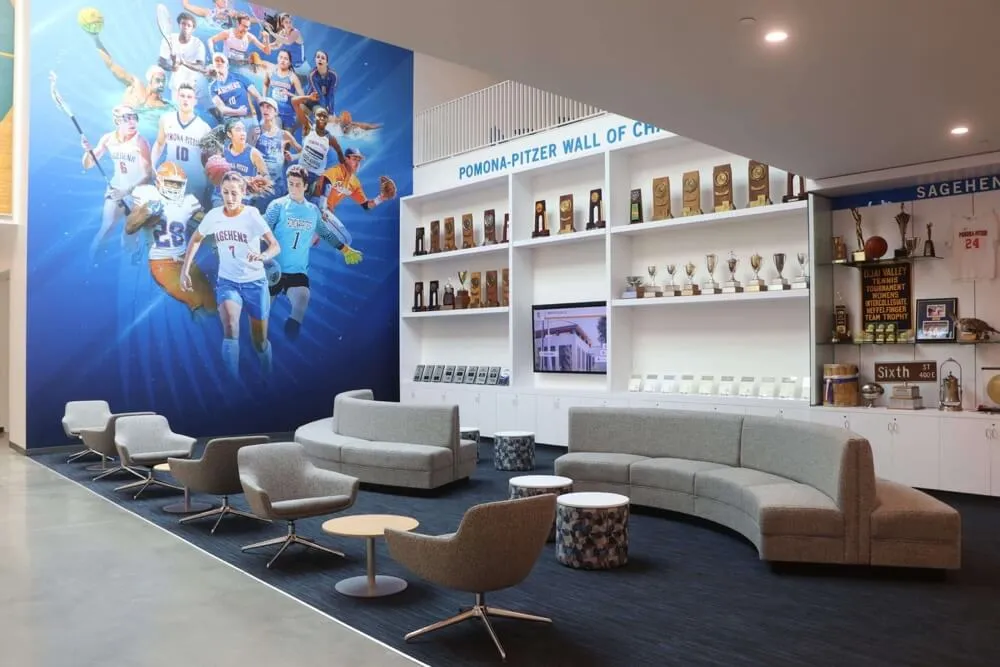
Creating Winter Sports Recognition Programs for Schools and Organizations
While national halls of fame honor elite achievements, schools and community organizations benefit from developing their own winter sports recognition programs celebrating local excellence and program traditions:
Why Schools Need Winter Sports Recognition
Winter athletic programs deserve recognition equal to fall and spring sports, yet often receive less visibility due to seasonal timing, facility constraints, and competition for attention with more prominent sports programs:
Equalizing Visibility Across Seasons:
Fall sports like football and soccer often dominate school athletic attention and resources, followed by high-profile winter sports like basketball. Less prominent winter sports—hockey, skiing, swimming, wrestling, indoor track—risk becoming overlooked despite requiring equal dedication and producing comparable achievements.
Comprehensive winter sports recognition ensures all programs receive appropriate visibility, communicating institutional values that celebrate diverse athletic excellence rather than prioritizing only the most popular programs. When ski team members receive recognition equivalent to football players, schools demonstrate authentic commitment to comprehensive athletic development.
Preserving Program History:
Winter sports achievements risk being forgotten faster than year-round sports because seasonal nature creates less continuous visibility. The state championship hockey team from 15 years ago, the record-setting swimmer from two decades past, and the pioneering female ice hockey players who built programs from nothing all deserve permanent recognition preventing their achievements from fading from collective memory.
Schools implementing comprehensive digital recognition systems preserve winter sports history systematically, ensuring outstanding achievements remain part of institutional consciousness rather than gradually disappearing as years pass.
Inspiring Current Winter Athletes:
When young hockey players enter school facilities and immediately see former players who wore the same uniform celebrated for reaching NHL levels, their own aspirations expand. When aspiring skiers see displays honoring alumni who competed at NCAA levels or reached World Cup circuits, abstract possibilities become concrete goals worth pursuing through years of intensive training.
Visible winter sports recognition answers the critical question every athlete asks: “What’s possible for someone like me?” The answers inspire commitment, persistence through challenging conditions, and belief that extraordinary achievement is attainable through dedication.
Supporting Recruitment and Program Building:
Schools with strong winter sports traditions use recognition displays during recruitment, showcasing program heritage that attracts talented athletes seeking established programs with winning cultures. Parents evaluating schools consider athletic program strength, and comprehensive recognition demonstrates institutional commitment to winter sports excellence.
Recognition also supports coaching recruitment, as accomplished coaches seek programs valuing success sufficiently to celebrate it appropriately. Facilities featuring professional recognition displays signal program seriousness that appeals to quality coaches capable of building championship teams.
Establishing Selection Criteria for Winter Sports Halls of Fame
Credible winter sports recognition programs require transparent selection criteria ensuring fair, defensible decisions:
Achievement Categories:
Comprehensive winter sports recognition includes multiple achievement types:
Championship Success:
- State championship team members across all winter sports
- Conference championship teams and tournament winners
- Individual state champions in sports like wrestling and swimming
- Regional and national championship participants and medalists
Individual Excellence:
- All-state selections across winter sports disciplines
- All-conference and all-region honors demonstrating sustained excellence
- Record-setting performances in individual sports (swimming times, wrestling pins, scoring records)
- Statistical leaders establishing program benchmarks
Post-High School Achievement:
- College athletic scholarship recipients continuing winter sport careers
- College All-American honors and national recognition
- Professional, Olympic, or international competition achievement
- Coaching or administrative careers advancing winter sports
Pioneering Contributions:
- Athletes who established new winter sport programs
- First participants in newly-added winter sports
- Athletes who achieved distinction despite limited resources or facility constraints
- Leaders who advocated for program development and gender equity
Many schools recognize All-State athletes across all sports with dedicated recognition programs celebrating students who achieved distinction beyond institutional boundaries.
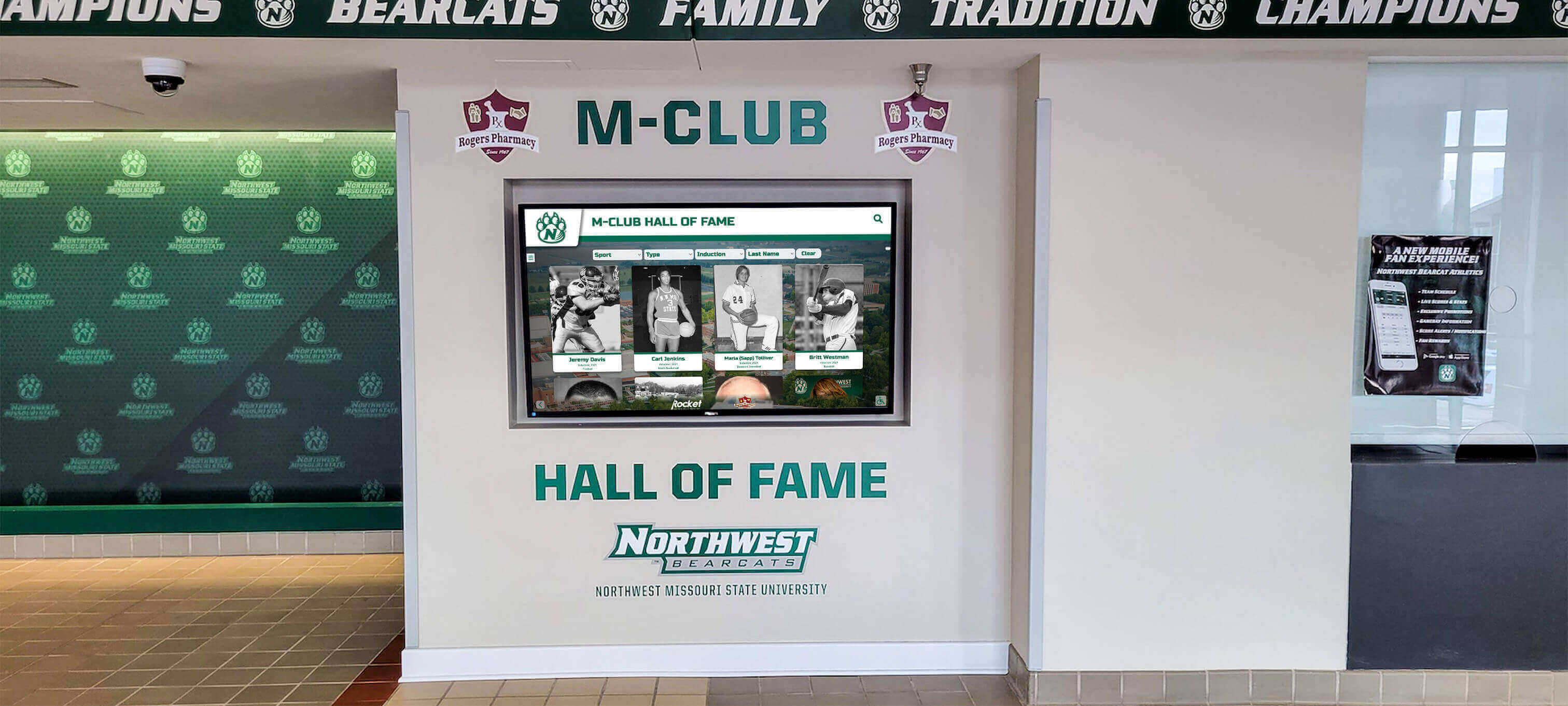
Coaching Recognition:
Outstanding winter sports coaches who built programs, developed talent, and established winning traditions deserve recognition alongside athletes:
Quantitative Achievements:
- Career victory milestones (100, 200, 500+ wins depending on sport)
- Conference and state championships won
- Winning percentage and sustained competitive excellence
- Athletes developed who earned college scholarships
- Record-setting teams and individual athletes coached
Qualitative Contributions:
- Program building and infrastructure development
- Creating positive program cultures emphasizing character and academics
- Mentoring assistant coaches who advanced to leadership positions
- Advocacy for program resources, facilities, and gender equity
- Sportsmanship, ethics, and positive representation of institutional values
Schools often implement comprehensive coaches appreciation programs recognizing mentors who transform individual talents into championship teams while developing character alongside competitive skills.
Sport Builder Category:
Beyond athletes and coaches, many individuals contribute to winter sports program success through other roles:
- Athletic directors who advocated for winter sports resources and facilities
- Boosters and volunteers who provided financial support and organizational assistance
- Officials who ensured fair competition through quality officiating
- Media personnel who elevated program visibility through coverage
- Facility managers who maintained quality ice rinks, pools, and training venues
Eligibility Standards:
Clear eligibility requirements prevent confusion:
Waiting Periods: Most programs implement 5-10 year waiting periods for athletes after graduation, ensuring sufficient perspective on achievements and preventing recency bias that might overvalue recent accomplishments while undervaluing historical excellence.
Character Standards: Recognition programs typically include conduct requirements ensuring honored individuals represent program values appropriately. Many include provisions for removing inductees who subsequently engage in serious misconduct, protecting recognition program integrity.
Achievement Thresholds: Establishing minimum achievement levels—such as requiring All-Conference honors, state tournament participation, or specific statistical benchmarks—creates meaningful recognition standards preventing participation awards from diluting recognition significance.
Nomination and Selection Processes
Structured processes maintain winter sports recognition program credibility:
Annual Nomination Periods:
Establish consistent annual cycles with clear deadlines:
- Fall nomination windows (September-November) allowing summer reflection
- Standardized nomination forms requesting comprehensive information
- Public announcement of nomination periods through school communications
- Clear instructions explaining eligibility criteria and required documentation
Nomination Form Content:
Comprehensive nomination forms should request:
- Complete athletic participation history across all seasons and years
- Statistical achievements and season-by-season performance summaries
- Championship participations and individual honors received
- Post-graduation athletic achievements and current status
- Narrative descriptions explaining nominee significance
- Supporting documentation (photos, news clippings, statistics, testimonials)
Selection Committee Composition:
Diverse committees ensure balanced evaluation:
- Athletic director or designee providing institutional perspective
- Current and former winter sports coaches with sport-specific expertise
- Alumni representatives offering historical context
- Community members contributing external viewpoints
- Student-athlete representation providing current participant perspectives
Voting Procedures:
Transparent voting maintains credibility:
- Anonymous ballot voting preventing peer pressure
- Substantial majority requirements (2/3 or 3/4) ensuring broad support
- Committee discussion before voting allowing thorough consideration
- Documentation of decision rationales building institutional memory
- Clear procedures for tie-breaking and close decisions
Announcement and Induction:
Professional communication honors inductees:
- Spring announcements providing time for induction preparation
- Direct inductee notification before public announcement
- Press releases generating media coverage and community awareness
- Fall induction ceremonies during homecoming or high-visibility events
- Reception opportunities for attendee interaction with inductees
Resources on establishing comprehensive halls of fame provide detailed frameworks for developing credible recognition programs that honor achievement while maintaining selection integrity.
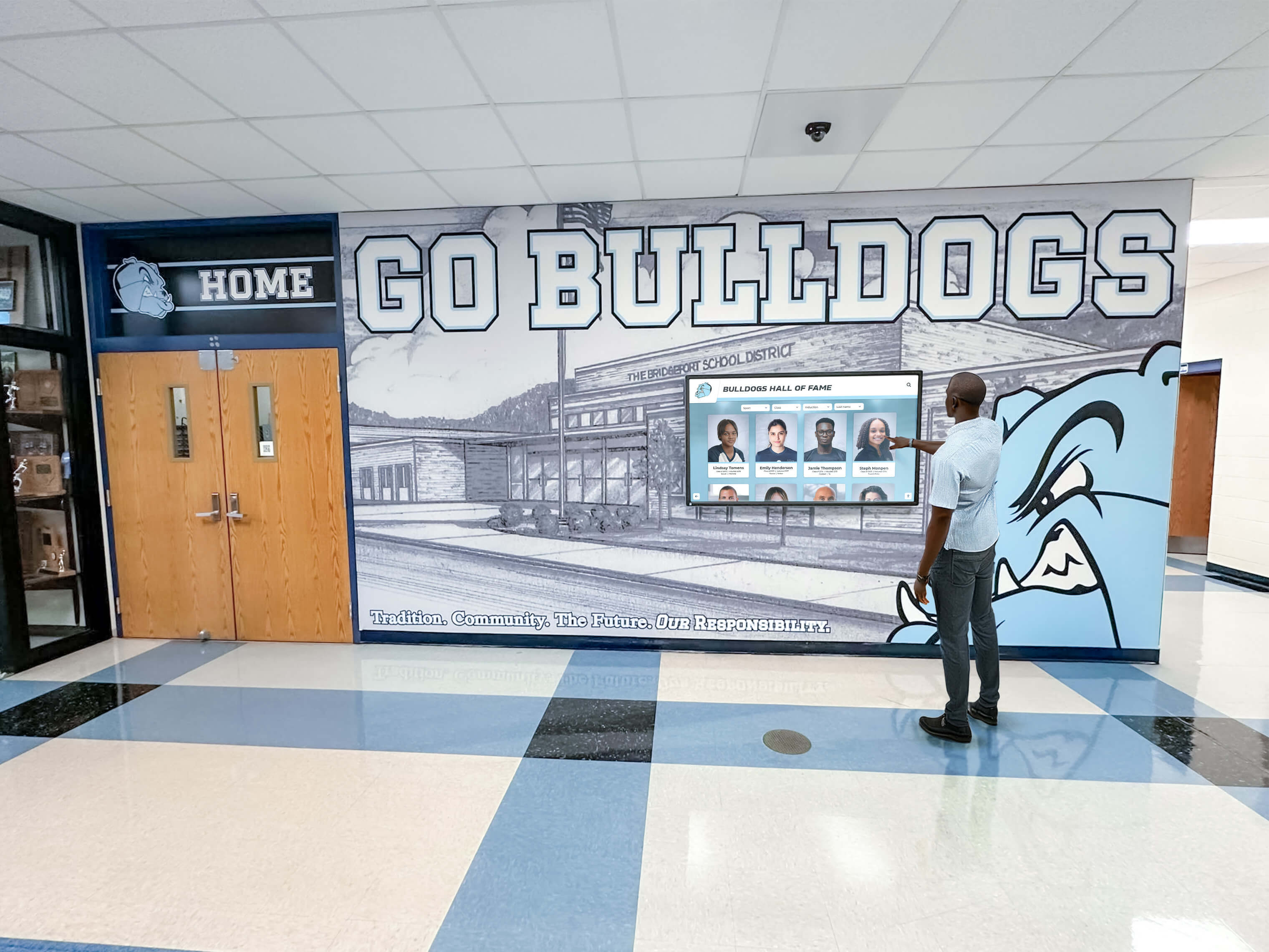
Modern Display Options for Winter Sports Recognition
Schools and organizations implementing winter sports recognition programs face critical decisions about display formats, each offering distinct advantages:
Traditional Physical Recognition Limitations
Engraved Plaques and Nameplates:
Classic brass or bronze plaques mounted on dedicated walls provide formal, permanent recognition creating impressive visual impact. Traditional plaques work well for institutions valuing classic aesthetics and permanent physical artifacts.
Limitations:
- Physical space constraints eventually limit expansion
- High per-inductee costs ($50-$200 per plaque) that accumulate indefinitely
- Limited information capacity (typically just name, year, sport, achievement)
- Inflexible content requiring replacement for any corrections or updates
- Physical deterioration from environmental exposure over time
- Installation labor and mounting requirements for additions
Photo Display Boards:
Framed photographs with descriptive text offer more personal connection than simple nameplates, helping visitors connect with individual stories behind achievements.
Limitations:
- Similar space constraints as plaque installations
- Maintaining consistent photography quality and styling across decades
- Physical maintenance (glass cleaning, frame repair, UV protection)
- Difficult and expensive to update or correct information errors
- Storage challenges for replaced materials as programs evolve
Trophy Cases:
Physical trophy displays showcase tangible artifacts—championship trophies, medals, equipment—providing authentic historical connections.
Limitations:
- Severe space limitations restricting displayed items
- Security concerns and theft/vandalism risks
- Environmental deterioration of materials over time
- Static displays without contextual information or athlete stories
- Inaccessibility of trophies “hidden” in cases receiving less visibility
While traditional recognition methods offer permanence and classic aesthetics, they impose significant constraints particularly problematic for comprehensive winter sports programs recognizing athletes across multiple disciplines over many decades.
Digital Interactive Recognition Advantages
Modern digital recognition platforms overcome traditional limitations while creating enhanced engagement experiences transforming how schools celebrate winter sports excellence:
Unlimited Recognition Capacity:
Digital systems accommodate unlimited inductees without physical space constraints. Whether recognizing 50 athletes or 500, the physical footprint remains constant—typically one or more wall-mounted displays providing access to comprehensive databases.
Schools can honor every deserving winter athlete from program history without selecting who receives visible recognition versus storage in forgotten archives. The state championship hockey team from 1985 receives equal prominence with last season’s individual swimming medalists, democratizing recognition across eras.
Comprehensive Multimedia Content:
Digital platforms enable rich athlete profiles including:
Photography and Video:
- Professional portraits and action shots from competitions
- Championship game highlights and record-breaking performances
- Season montages celebrating team accomplishments
- Interview videos featuring athletes reflecting on experiences
- Historical photos documenting program evolution over decades
Detailed Information:
- Complete statistical records and season-by-season progression
- Narrative biographies celebrating athletic and personal journeys
- Post-graduation accomplishments and career updates
- Teammates and coaching staff providing context
- Historical context situating achievements within program traditions
Interactive Exploration:
- Search functions finding specific athletes, teams, or seasons instantly
- Filtering by sport, graduation year, achievement type, or category
- Photo galleries enabling visual browsing through program history
- Video libraries with searchable archives of memorable moments
- Statistical leaderboards comparing performances across eras
This multimedia richness transforms recognition from simple name lists into engaging storytelling celebrating comprehensive athlete achievements while preserving program history in accessible formats.
Instant Content Updates:
Cloud-based content management systems allow updates from any internet-connected device in minutes:
When a current athlete breaks a 20-year-old swimming record during Friday’s meet, displays can be updated by Saturday morning. When program alumni achieve post-graduation distinction—making Olympic teams, earning professional contracts, receiving coaching awards—their profiles update immediately reflecting current accomplishments.
This agility contrasts dramatically with traditional recognition requiring weeks for plaque ordering, fabrication, and installation before new achievements receive visibility. Digital systems enable real-time recognition maintaining relevance and timeliness impossible with physical alternatives.
Remote Accessibility:
Web-based viewing extends recognition beyond physical displays:
Athletes share achievements with family members via social media, connecting geographically dispersed supporters to program recognition. Alumni access program information from anywhere, maintaining connections regardless of location. College coaches and recruiters research program traditions and athlete accomplishments remotely, supporting recruitment efforts.
This expanded reach amplifies recognition impact while strengthening connections with stakeholders unable to regularly visit physical facilities.
Lower Long-Term Costs:
While digital systems require higher initial investment ($5,000-$20,000 for comprehensive installations depending on display size and features), they eliminate ongoing per-update costs accumulating with traditional systems:
Traditional plaque costs of $75-$150 per inductee multiply significantly over decades—10 annual inductees over 20 years equals 200 plaques at $15,000-$30,000 plus installation labor, not including space expansion costs when walls fill completely.
Digital systems incur modest annual software subscription costs (typically $500-$2,000 depending on features) but accommodate unlimited additions without incremental expenses. Most schools achieve cost neutrality within 3-5 years while gaining dramatically superior capabilities.
Resources on comprehensive digital hall of fame benefits help schools evaluate complete value propositions beyond initial price comparisons.
Environmental Sustainability:
Digital recognition eliminates manufacturing, material waste, and shipping associated with physical plaques and frames, aligning with institutional sustainability commitments while reducing environmental footprints.
Solutions like Rocket Alumni Solutions provide purpose-built platforms designed specifically for school athletic recognition rather than generic digital signage systems requiring extensive customization. These specialized systems deliver intuitive content management, professional templates, and ongoing support ensuring schools can maintain impressive displays without requiring technical expertise or dedicated IT resources.
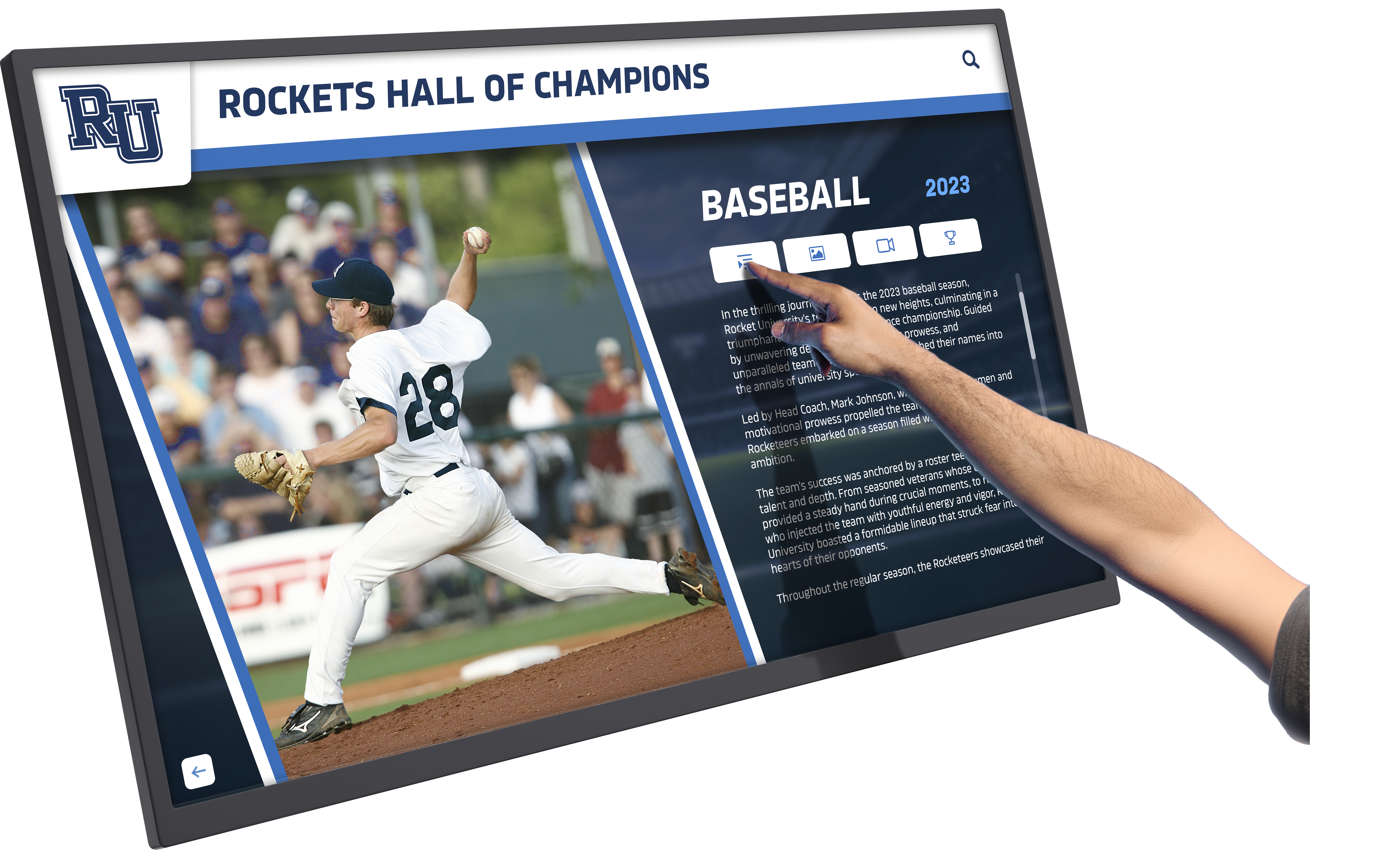
Integrating Winter Sports Within Comprehensive Athletic Recognition
The most effective recognition systems integrate winter sports halls of fame within broader athletic recognition programs celebrating excellence across all seasons:
Multi-Season Athletic Recognition
Comprehensive athletic displays accommodate:
Fall Sports: Football, soccer, volleyball, cross country, field hockey, and other autumn competitions
Winter Sports: Basketball, ice hockey, wrestling, swimming, indoor track, skiing, figure skating, and all winter disciplines
Spring Sports: Baseball, softball, lacrosse, track and field, tennis, golf, and spring competitions
Digital systems excel at multi-season recognition because unlimited capacity prevents competition for limited space. Every sport receives appropriate recognition without compromising other programs—hockey legends receive comprehensive profiles alongside football heroes, swimming record holders, and track and field champions.
Schools can implement sport-specific recognition modules while maintaining unified design language and navigation, creating cohesive systems that celebrate program-wide excellence while respecting each sport’s unique traditions and achievement metrics.
Championship Team Recognition
Beyond individual athlete halls of fame, comprehensive systems celebrate team accomplishments:
Conference Championships: Recognizing teams winning league titles across all sports and seasons
State Tournament Success: Celebrating teams reaching playoffs, semifinals, and championships
Undefeated Seasons: Honoring teams achieving perfect records
Historic Milestones: Commemorating program-defining achievements like first championships
Anniversary Celebrations: Recognizing significant anniversaries of historic teams (25th, 50th)
Digital platforms enable rich team recognition including complete rosters, season summaries, championship game recaps, photo galleries, and video highlights bringing historic moments to life for current students who weren’t present when championships occurred.
Resources on showcasing championship teams provide frameworks for celebrating collective achievements alongside individual honors.
Academic and Character Recognition Integration
The most holistic programs connect athletic excellence with academic achievement and character development:
Academic All-Conference and All-State: Celebrating students excelling in classroom and competition
Scholar-Athlete Awards: Recognizing sustained academic excellence throughout athletic careers
Character and Leadership Awards: Honoring students embodying program values beyond statistics
Community Service Recognition: Celebrating athletes contributing significantly to community needs
Post-Graduation Success: Profiling career achievements in fields beyond athletics
This integrated approach communicates institutional values emphasizing comprehensive excellence—athletic achievement paired with academic success and strong character—rather than celebrating athletics isolated from broader educational missions.
Schools implementing comprehensive student achievement recognition celebrate well-rounded excellence preparing students for life success beyond sports competition.
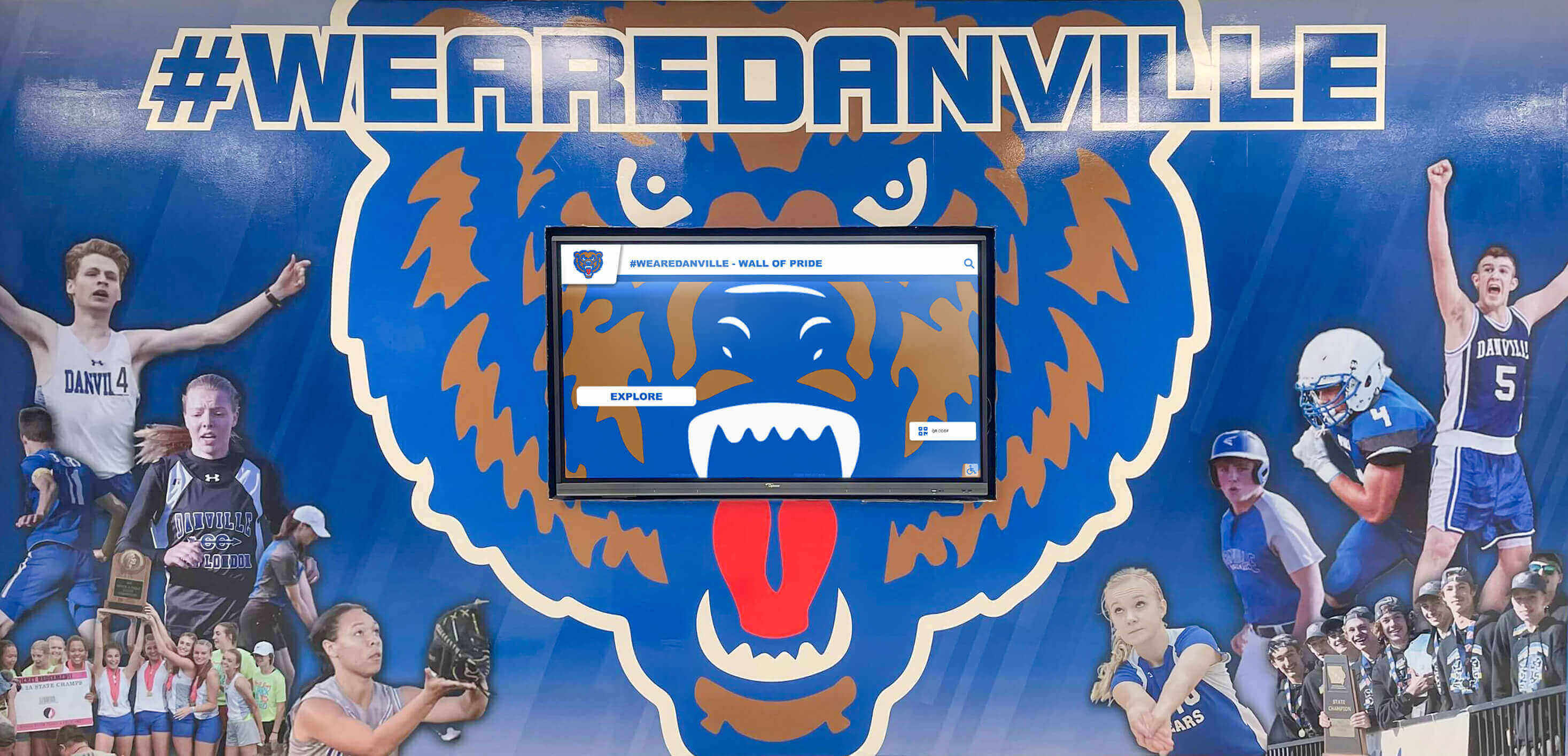
Implementing Your Winter Sports Recognition Program
Successfully launching winter sports recognition requires systematic planning addressing multiple implementation dimensions:
Phase 1: Planning and Foundation (Months 1-3)
Define Program Objectives:
Clarify primary purposes guiding subsequent decisions:
- Preserving winter sports program history and traditions
- Inspiring current winter athletes through visible achievement models
- Engaging alumni and strengthening lifelong program connections
- Enhancing winter sports recruiting and program visibility
- Building program pride and school-wide recognition of winter excellence
- Equalizing recognition across seasons and sports
Establish Selection Criteria:
Document specific requirements creating fair, transparent evaluation frameworks:
- Achievement thresholds for various sports and competition levels
- Eligibility requirements including waiting periods and character standards
- Recognition categories accommodating diverse achievement types
- Sport-specific criteria respecting unique competitive structures
Form Selection Committee:
Assemble diverse committees ensuring balanced perspectives:
- Athletic department leadership providing institutional oversight
- Winter sports coaches contributing sport-specific expertise
- Alumni representatives offering historical context and continuity
- Community members providing external viewpoints
- Student-athletes representing current participant perspectives
Develop Budget:
Create realistic financial projections:
Initial Investment:
- Display hardware (touchscreens, mounting systems, connectivity)
- Software platforms and setup
- Content development (writing, photography, design)
- Professional installation
- Launch event and promotion
Ongoing Operational Costs:
- Annual software subscriptions or maintenance contracts
- Content updates and additions for new inductees
- Photography and media production
- Induction ceremony expenses
- Marketing and communication materials
Funding Sources:
- Athletic department budgets allocating resources
- Booster organization support and targeted fundraising
- Alumni donations and capital campaigns
- Corporate sponsorships from local businesses
- Grant opportunities supporting athletic program development
Understanding comprehensive budget planning helps schools develop realistic financial frameworks ensuring successful program launches and sustainable operations.
Phase 2: Content Development (Months 3-6)
Select Inaugural Inductees:
Begin with manageable inaugural classes ensuring diverse representation:
Achievement Diversity: Include championship team members, individual state champions, record holders, and character award winners demonstrating multiple paths to recognition
Sport Diversity: Represent all major winter sports proportionally to program participation—basketball, hockey, wrestling, swimming, skiing, figure skating, etc.
Era Diversity: Span program history from founding decades through recent graduates, preventing recency bias while honoring historical excellence
Demographic Diversity: Ensure gender equity and demographic representation reflecting student body composition and participation patterns
Gather Information and Assets:
Systematically collect content through multiple sources:
Direct Outreach: Contact living alumni with detailed questionnaires requesting biographical information, athletic statistics, memorable moments, and current status. Many alumni eagerly share information when invited to participate.
Archival Research: Review yearbooks, school newspapers, athletic media guides, program records, and institutional archives documenting achievements, team photos, and historical context.
Interviews: Conduct recorded interviews with inductees, teammates, coaches, and family members capturing personal narratives, behind-the-scenes stories, and reflections on program impact.
Photo Collection: Gather images from institutional archives, personal collections, yearbook publishers, local media archives, and family photo albums, ensuring proper permissions and use rights.
Statistical Verification: Confirm achievements through official records, state athletic association databases, news archives, and program record books, preventing inaccuracies that undermine credibility.
Create Professional Profiles:
Develop comprehensive biographical narratives:
Achievement Summary: Lead with most significant accomplishments establishing recognition justification—state championships, All-State selections, records set, etc.
Career Narrative: Document season-by-season progression showing development from emerging talent to distinguished achievement
Team Context: Describe team success during athlete’s participation, recognizing collective achievements alongside individual excellence
Memorable Moments: Highlight specific performances, games, or achievements demonstrating character and competitive excellence
Personal Journey: Include information about athlete’s background, challenges overcome, and factors contributing to success
Post-Graduation: Update with college athletic achievements, professional accomplishments, career success, and current status maintaining connection to program
Impact Statement: Articulate lasting influence on program—records that stood for decades, inspiration to subsequent athletes, contributions to program building
Schools creating effective digital athletic recognition showcase athletes comprehensively, celebrating statistical achievement alongside character dimensions inspiring current students.
Phase 3: Display Implementation (Months 6-9)
Select Display Format:
Choose between traditional physical displays, digital interactive systems, or hybrid approaches based on:
Budget: Balance initial investment against long-term operational costs and expansion requirements
Space: Evaluate available wall space, visibility, traffic patterns, and facility constraints
Content Depth: Determine whether simple name recognition suffices or comprehensive profiles add meaningful value
Technical Resources: Assess IT support availability for system management and troubleshooting
Stakeholder Preferences: Consider community expectations, institutional culture, and aesthetic preferences
Design and Installation:
Work with specialized providers ensuring professional results:
Display Design: Create interfaces reflecting institutional branding, colors, mascots, and visual identity while maintaining intuitive navigation and accessibility
Hardware Selection: Choose appropriate display sizes (typically 43"-65" for touchscreens) based on viewing distances, mounting locations, and budget parameters
Strategic Placement: Position displays in high-visibility locations—main entrances, athletic facilities, cafeterias, hallways near gymnasiums—maximizing exposure and engagement
Technical Infrastructure: Ensure proper electrical power, internet connectivity (wired preferred over wireless), secure mounting, and accessibility compliance
Testing: Conduct thorough testing before public unveiling, verifying all content displays correctly, touch responsiveness works reliably, and navigation flows intuitively
Content Loading:
Import inductee profiles into systems:
- Organize navigation structures enabling intuitive browsing by sport, era, achievement type
- Configure search and filtering functionality
- Verify information accuracy and consistency
- Test multimedia playback (videos, photo galleries)
- Train staff on content management and system operation
Resources on digital hall of fame maintenance prepare schools for ongoing management ensuring reliable operation and professional appearance.
Phase 4: Launch and Ongoing Operations (Month 9+)
Induction Ceremony:
Create memorable inaugural events:
Formal Program: Develop structured ceremonies with welcome remarks, inductee introductions, acceptance speeches, and display unveilings creating dignified celebrations honoring achievement
Distinguished Speakers: Invite institutional leaders, successful alumni, or notable figures delivering keynote addresses connecting recognition to institutional values and mission
Media Coverage: Generate press releases, invite local media, livestream ceremonies, and document events photographically ensuring broad community awareness
Reception: Provide opportunities for attendees to interact with inductees, view displays, and celebrate collectively
Annual Cycles:
Establish predictable rhythms:
Fall Nominations (September-November): Open nomination periods with community outreach encouraging submissions
Winter Selection (December-February): Committee reviews nominations, conducts deliberations, and votes on inductees
Spring Announcements (March-April): Publicly announce new inductees providing time for preparation
Summer Content Development (May-August): Gather information, conduct interviews, develop profiles, and prepare displays
Fall Induction (September-October): Conduct ceremonies during homecoming, major athletic events, or dedicated recognition weekends maximizing attendance
Content Enhancement:
Maintain engagement through ongoing improvements:
- Enhanced profiles adding newly discovered photos, videos, or information
- Featured inductee rotations highlighting different individuals monthly or seasonally
- Achievement updates as alumni reach new milestones post-graduation
- Anniversary celebrations recognizing significant milestones for historic teams
- Connection to current season highlighting legacy inspirations
Measuring Success:
Evaluate program impact through multiple metrics:
Quantitative Indicators: Display interaction frequency, viewing time patterns, most-viewed profiles, web traffic to online recognition platforms, social media engagement with recognition content
Qualitative Assessment: Athlete feedback about recognition meaningfulness, coach observations about cultural impact, alumni engagement during visits, community awareness of program achievements
The most important impacts often involve cultural shifts—current athletes feeling connected to program history, improved community perception of winter sports programs, athletes demonstrating pride in representing traditions, and historical achievements inspiring current teams during challenging seasons.
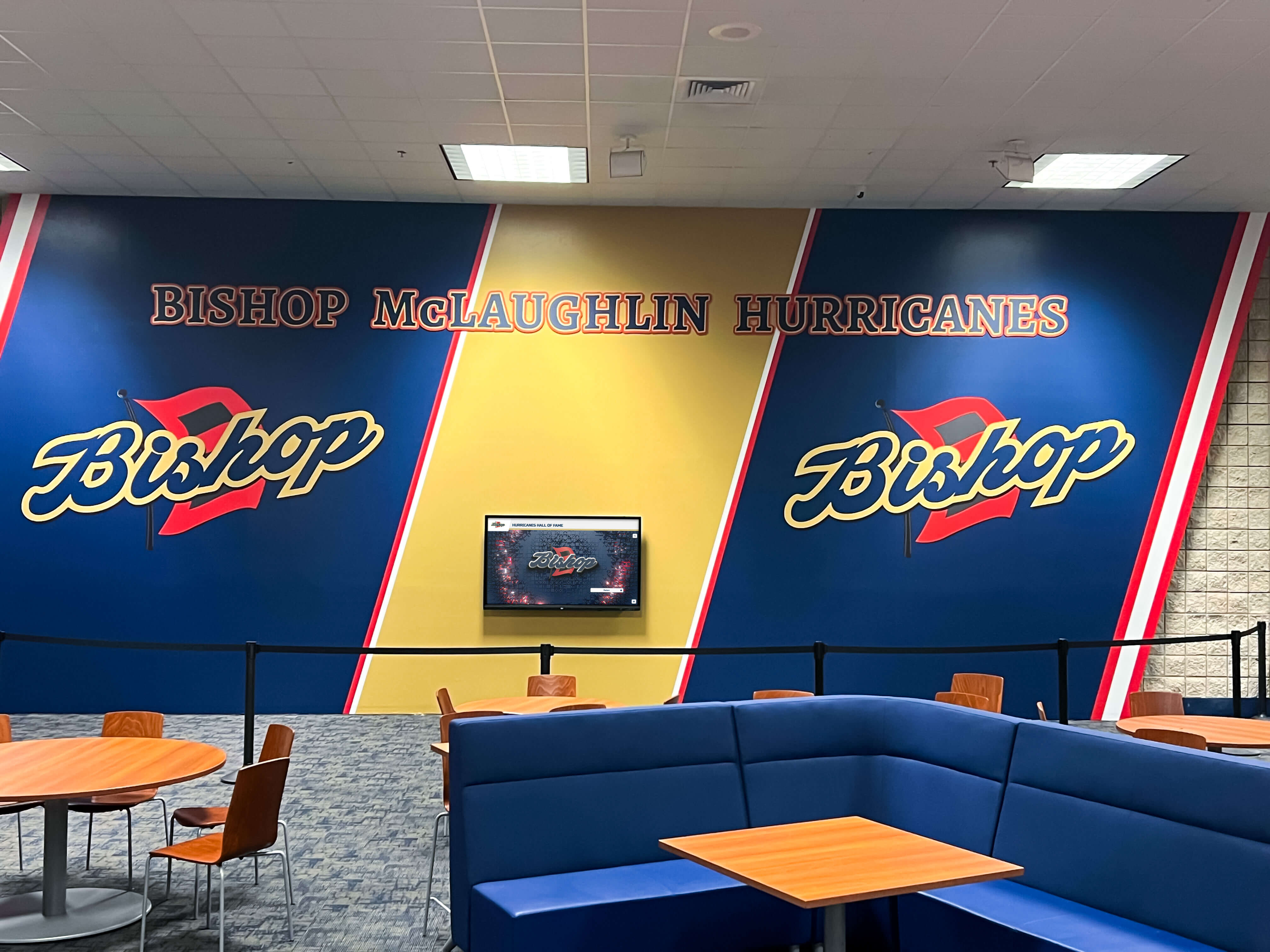
Winter Sports Recognition Best Practices
Successful winter sports recognition programs share common characteristics worth emulating:
Sport-Specific Recognition Elements
Effective programs respect unique characteristics of different winter sports:
Ice Hockey Recognition:
Hockey programs benefit from recognition including:
- Career scoring leaders (goals, assists, points)
- Goaltender records (wins, shutouts, save percentage)
- Championship team rosters and playoff performances
- All-conference and all-state selections
- College commitment celebrations
- Professional and Olympic achievement tracking
Schools with strong hockey traditions can explore comprehensive hockey recognition systems designed specifically for the sport’s unique statistical categories and traditions.
Swimming and Diving Recognition:
Aquatic programs feature highly measurable achievements:
- Event-specific record boards tracking best times across distances and strokes
- State meet qualifiers and medalists
- State record holders and national qualifying times
- Relay team records and championships
- Conference championship teams
- Diver state qualifiers and medalists
Wrestling Recognition:
Wrestling’s individual nature creates distinct recognition opportunities:
- State championship medalists by weight class and year
- Career win totals and winning percentages
- Pin records and technical superiority victories
- Undefeated seasons and long winning streaks
- College All-American honors and national placement
- Coaching milestone recognition (career wins, state championships)
Alpine and Nordic Skiing Recognition:
Ski programs celebrate specialized achievements:
- State championship medalists by discipline (slalom, giant slalom, cross-country)
- All-state selections and top finishes
- Regional and national competition qualifiers
- College ski team commitments
- Olympic development program participants
- Program pioneers who established teams
Figure Skating Recognition:
Figure skating programs honor artistic and athletic excellence:
- Competition medalists at regional, state, and national levels
- Skating test progression milestones
- Competitive level achievements (juvenile, intermediate, novice, junior, senior)
- Skating club honors and recognition
- College and competitive program advancement
Creating Emotional Connections
The most effective recognition transcends statistics, creating emotional connections through storytelling:
Personal Narratives: Share athlete backgrounds, challenges overcome, and personal journeys making achievements more meaningful than statistics alone
Coach Testimonials: Include coach reflections about athlete impact, memorable moments, and character qualities demonstrating significance beyond numbers
Teammate Perspectives: Feature quotes from teammates providing peer insights about leadership, dedication, and contributions to team culture
Family Stories: Incorporate family member perspectives about athlete dedication, sacrifices made, and achievement significance
“Where Are They Now” Updates: Maintain connections by updating profiles with post-graduation accomplishments showing how athletic experiences influenced life trajectories
These personal elements transform recognition from impersonal statistics lists into inspiring narratives demonstrating how dedication, character, and persistence enable extraordinary achievement.
Connecting Past to Present
Recognition achieves maximum impact when intentionally connected to current programs:
Coach Integration: Coaches reference hall of fame members during practice and competition—“You’re attempting what [Hall of Famer] accomplished 20 years ago when she set the school record”—making history tangible and relevant.
Alumni Mentorship: Connect current athletes with accomplished alumni who provide guidance, share experiences, and model successful transitions from high school to college or professional levels.
Recognition Ceremonies: Schedule induction ceremonies during current season events—honoring historic hockey players during current season games—connecting past excellence to present competitions.
Social Media Content: Regularly feature “Throwback Thursday” recognition content, milestone anniversaries, and historical achievements connecting social media audiences to program traditions.
Recruit Engagement: Utilize recognition during campus visits, showing prospective athletes the program’s proud traditions and celebrating those who came before while inviting them to add their own chapters to continuing stories.
Programs implementing these connections ensure recognition serves active purposes inspiring current athletes rather than simply memorializing past achievements.
Conclusion: Honoring Winter Sports Excellence
Winter sports halls of fame serve vital purposes whether honoring Olympic and professional legends through national institutions like the U.S. Ski & Snowboard Hall of Fame and Hockey Hall of Fame or celebrating local heroes through school and community recognition programs. From Todd Richards’ pioneering snowboard achievements to Zdeno Chára’s NHL excellence to the high school hockey player who led a small town team to an improbable state championship, winter sports achievement at every level deserves appropriate recognition preserving legacies while inspiring future generations.
The U.S. Ski & Snowboard Hall of Fame’s Class of 2025—featuring competitive legends alongside adaptive sports pioneers and sport builders—demonstrates the breadth of meaningful contributions to winter athletics. The Hockey Hall of Fame’s 2025 inductees spanning men’s and women’s international competition and coaching excellence recognize diverse pathways to distinction. These national institutions establish standards for comprehensive recognition celebrating achievement while preserving sport history.
For schools and organizations creating winter sports recognition programs, modern digital solutions overcome limitations of traditional physical displays while delivering superior long-term value. Unlimited capacity ensures every deserving winter athlete receives recognition across hockey, swimming, wrestling, skiing, figure skating, and all winter disciplines. Instant updates enable timely celebration of current achievements alongside historical excellence. Rich multimedia content creates emotional connections impossible with simple plaques. Interactive features engage visitors in exploration of program history.
Whether implementing comprehensive athletic recognition across all sports or focusing specifically on winter achievements, purpose-built solutions like those from Rocket Alumni Solutions provide intuitive platforms schools manage confidently without requiring technical expertise. These systems transform recognition from static name lists into engaging experiences honoring past excellence while inspiring current athletes to pursue their own places in program history.
Winter sports’ unique challenges—demanding conditions, specialized equipment, intensive training, seasonal visibility constraints—make achievements particularly worthy of recognition. Effective hall of fame programs ensure these profound contributions receive lasting celebration deserving of the dedication winter athletes demonstrate throughout careers marked by early morning practices, weekend travel, and commitment during sport’s most challenging seasons.
The most successful winter sports recognition programs balance respect for tradition with embrace of modern technology, honor individual achievement while celebrating team success, and preserve historical excellence while remaining dynamically connected to current program activities. They communicate institutional values celebrating athletic excellence alongside academic achievement and character development, preparing students for life success extending far beyond sports competition.
Visit Rocket Alumni Solutions to explore how modern recognition technology transforms winter sports celebration from space-constrained physical displays into comprehensive digital experiences honoring program traditions while engaging contemporary audiences through intuitive, professional platforms designed specifically for school and organizational athletic recognition across all seasons and sports.
